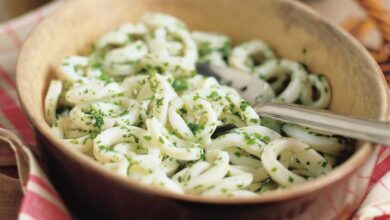How to Propagate Fishtail Palm
Greetings fellow plant enthusiasts! If you’ve ever fallen in love with the elegant foliage of the Fishtail Palm (Caryota spp.), you might be wondering how to propagate this stunning houseplant to expand your collection or share its beauty with friends and family. Well, you’re in luck because in this comprehensive guide, I’m going to walk you through the art of propagating the Fishtail Palm effectively.
The Fishtail Palm, with its unique, feathery fronds resembling fish tails, is a tropical gem that can thrive indoors if provided with the right care and environment. Propagation is an exciting way to create new plants and further enhance your indoor green oasis.How to Propagate Fishtail Palm
In this article, we will delve into the various propagation methods for Fishtail Palms, providing you with step-by-step instructions and insights into the pros and cons of each method. But before we dive into the details, let’s first get an overview of the propagation basics.
2. Fishtail Palm Propagation Basics
Let’s start with a quick overview of Fishtail Palm propagation methods and their key attributes. This table summarizes the essentials you need to know before choosing a propagation method:
Method Time for Propagation Working Time Total Time Difficulty Level Materials Required
Seeds 6-8 weeks Moderate Medium Moderate Fresh Fishtail Palm seeds, well-draining potting mix, containers, plastic wrap, and heat mat (optional)
Offsets (Pups) 4-8 weeks Low Medium Easy Mature Fishtail Palm with offsets, sharp knife or shears, well-draining potting mix, containers
Air Layering 8-12 weeks Low Medium Moderate Sphagnum moss, plastic wrap, sharp knife, rooting hormone, plastic wrap, and string
Division 4-8 weeks Moderate Medium Moderate Mature Fishtail Palm, shovel or sharp spade, well-draining potting mix, containers
Now that you have a basic understanding of the available methods and their characteristics, let’s dive into the specifics of each propagation method.
3. Propagation Methods
a. Seeds
Method: Propagating Fishtail Palms from seeds is a rewarding but time-consuming process. Here’s a step-by-step guide:
Step 1: Acquire fresh Fishtail Palm seeds from a reputable source.
Step 2: Fill a container with a well-draining potting mix and plant the seeds about an inch deep.
Step 3: Cover the container with plastic wrap to create a mini-greenhouse effect.
Step 4: Place the container on a heat mat (optional) to maintain a consistent temperature of around 80°F (27°C).
Step 5: Keep the soil consistently moist but not waterlogged.
Step 6: Germination typically occurs within 6-8 weeks.
Pros:
Growing from seeds allows you to experience the entire life cycle of the plant.
It can be a cost-effective method if you already have access to seeds.
Cons:
Requires patience as it takes longer to see results.
Some varieties of Fishtail Palms may produce sterile seeds.
b. Offsets (Pups)
Method: Propagating Fishtail Palms from offsets, or pups, is a relatively easy process:
Step 1: Identify a mature Fishtail Palm with offsets.
Step 2: Carefully separate the offsets from the parent plant using a sharp knife or shears.
Step 3: Plant the offsets in well-draining potting mix in separate containers.
Step 4: Keep the soil consistently moist and provide bright, indirect light.
Pros:
Offsets are genetically identical to the parent plant.
This method yields quicker results compared to seeds.
Cons:
You need access to a mature Fishtail Palm with offsets.
May require repotting as the pups grow larger.
c. Air Layering
Method: Air layering is another effective way to propagate Fishtail Palms:
Step 1: Choose a healthy stem and make a small, upward cut.
Step 2: Apply rooting hormone to the cut area.
Step 3: Pack damp sphagnum moss around the cut area.
Step 4: Wrap plastic wrap around the moss to keep it in place.
Step 5: Secure the plastic wrap with string.
Step 6: Roots should form within 8-12 weeks.
Pros:
Suitable for larger, established Fishtail Palms.
Can be done without removing the parent plant.
Cons:
Requires patience and monitoring.
The success rate may vary.
d. Division
Method: Dividing a mature Fishtail Palm is a straightforward way to create new plants:
Step 1: Carefully remove the plant from its container.
Step 2: Use a sharp shovel or spade to divide the plant into sections, ensuring each section has roots attached.
Step 3: Repot the divided sections into separate containers with well-draining potting mix.
Pros:
Results in multiple new plants.
Suitable for rejuvenating overgrown Fishtail Palms.
Cons:
May require some effort and care during the division process.
You’ll need a mature plant to start with.
In conclusion, propagating Fishtail Palms can be a rewarding experience for any plant lover. Each propagation method has its own set of advantages and challenges, so choose the one that best suits your circumstances and preferences. With patience and care, you can successfully propagate this stunning palm and enjoy its beauty in multiple corners of your home.


